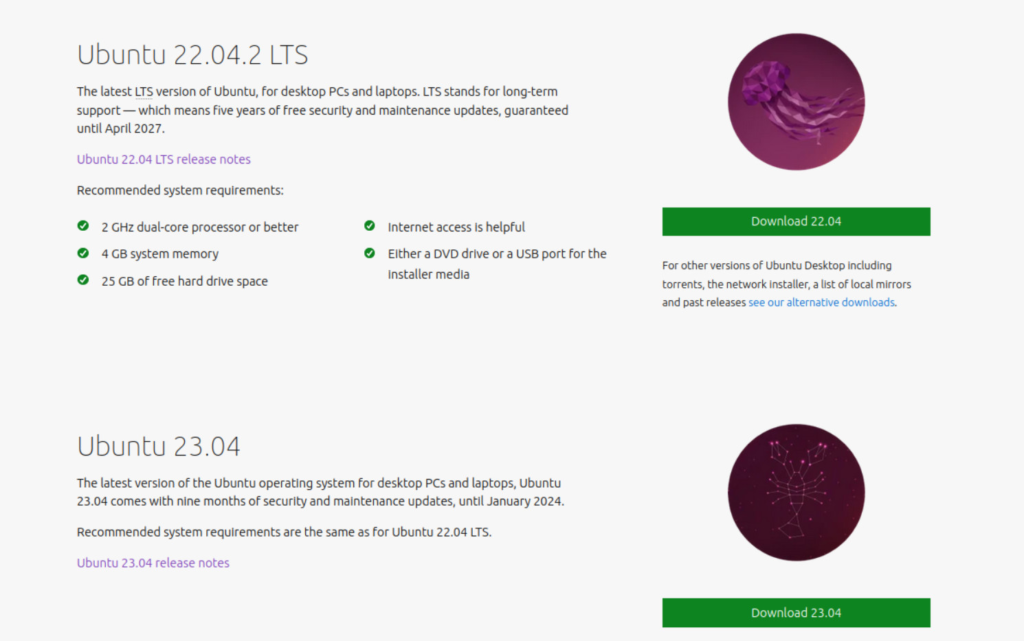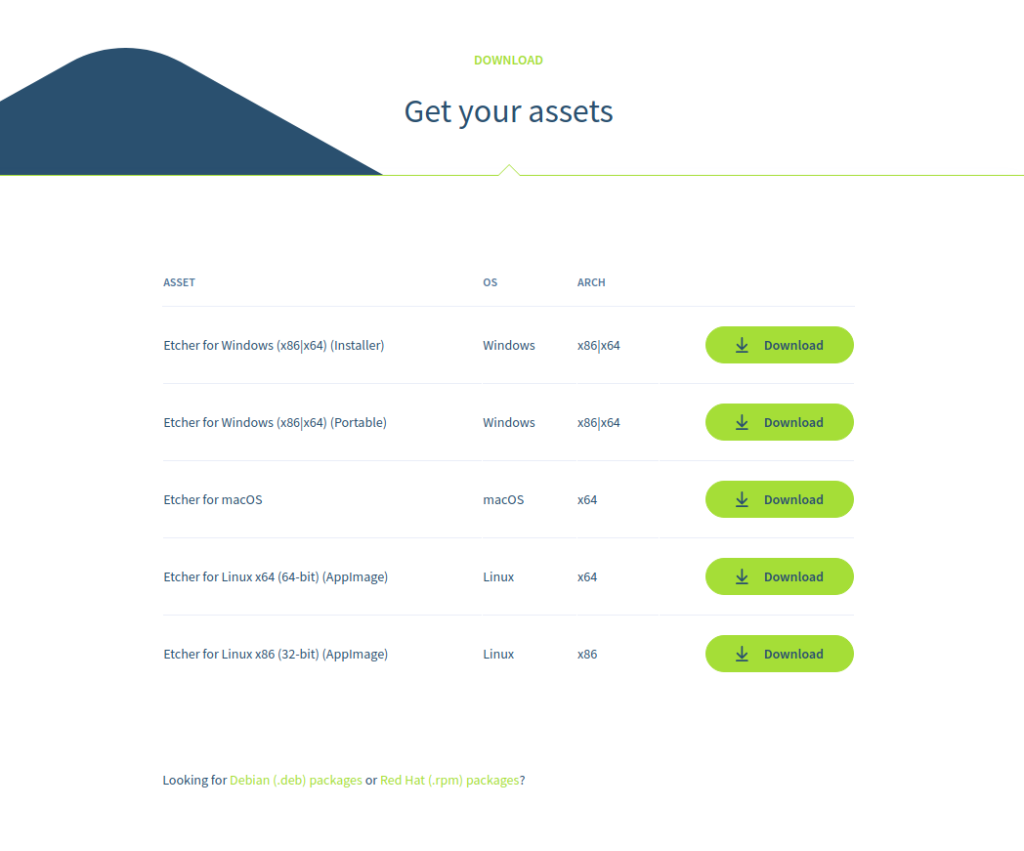Install Ubuntu latest desktop
- Overview
- Download an Ubuntu Image
- Create a Bootable USB stick
- Boot from USB flash drive
- Installation Setup
- Type of installation
- Ready to install
- Choose your Location
- Create Your Login Details
- Complete the Installation
- Don’t forget to Update!
Overview
What you’ll learn
In this tutorial, we will guide you through the steps required to install Ubuntu Desktop on your laptop or PC
What you’ll need
A laptop or PC with at least 25GB of storage space.
A flash drive (12GB or above recommended).
While Ubuntu works on a wide variety of devices, it is recommended that you use devices listed on the Ubuntu Certified Hardware page. These tools have been tested and confirmed to work well with Ubuntu.
See Also – What is Linux Operating System?
If you are installing Ubuntu on a PC or laptop that you have used before, it is always advisable to backup your data before installation.
Download an Ubuntu Image
You can download the Ubuntu image here. Make sure to save it to a memorable location on your PC! For this tutorial, we will be using Ubuntu 23.04 release which uses the new Ubuntu desktop installer that will be included in all future Ubuntu releases.

If you are installing an older version of Ubuntu, such as Ubuntu 22.04 LTS, you will find that the visual presentation of the installer is different, but the overall flow should remain the same.
Create a Bootable USB stick
To install Ubuntu desktop, you need to write your downloaded ISO to a USB stick to create installation media. This is not the same as copying an ISO, and requires some specific software.
For this tutorial, we’ll use balenaEtcher, as it runs on Linux, Windows and Mac OS.Choose the version that matches your current operating system, download and install the tool.

Select your downloaded ISO, select your USB flash drive and then click Flash! To establish your image.

Boot from USB flash drive
Insert the USB flash drive into the laptop or PC you want to use to install Ubuntu and boot or restart the device. It should recognise the installation media automatically. If not, try holding F12 during startup and selecting the USB device from the system-specific boot menu.
F12 is the most common key to bring up your system’s boot menu, but Escape, F2, and F10 are common choices. If you’re unsure, look for a brief message when your system starts up – it will often inform you which key to press to bring up the boot menu.

Once the installer starts you will be invited to select your languageAnd then presented with the option to try or install Ubuntu.

If you click Try Ubuntu, you can preview Ubuntu without making any changes to your PC. You can return to the installer menu at any time by clicking the Install Ubuntu shortcut on the desktop.
To proceed, click Install Ubuntu.
You will be asked to select your keyboard layout. Once you choose one, click Continue.

You will then be asked to connect to Wi-Fi, this will allow Ubuntu to download updates and third-party drivers (such as NVIDIA graphics drivers) during the installation. Once you’re connected to Wi-Fi (or choose to proceed offline) we can continue with the installation setup.
(alert) RST is enabled
Some PCs use Intel RST (Rapid Storage Technology) which is not supported by Ubuntu. If this is the case you will not be able to proceed beyond this point without disabling RST in your machine’s BIOS menu. If you get this pop-up please visit help.ubuntu.com/rst for more information.

Ubuntu Installation Setup
You will be asked to choose between normal installation and minimal installation options. Minimal installation is useful for those who have small hard drives or who do not need many pre-installed applications.
In other options, you will be prompted to download updates as well as third-party software that can improve device support and performance (for example, Nvidia graphics drivers) during installation. It is recommended to check both of these boxes.

Type of installation
This screen allows you to configure your installation. If you want Ubuntu to be the only operating system on your hard drive, choose Erase Disk and install Ubuntu.
If you have another operating system currently installed on your device, you will get additional options to install Ubuntu with that OS instead of replacing it.

Let’s take a moment to review all the above options in detail.
Installing Ubuntu with another operating system
If you select this option you will be given a simple interface that allows you to select the drive you want to install Ubuntu on and a slider to determine where you want to use Ubuntu. Are. Amount of disk space. Available space is limited by the existing contents of the disk and is designed to avoid overwriting existing files.
This view automatically selects the largest partition on the drive. You can switch to the manual split option below for more fine-grained control.

Erase Disk and Install Ubuntu. If you select this option Ubuntu will take up the entire disk space on the selected drive.

If your PC has multiple hard drives this option allows you to install Ubuntu alongside the existing OS, as long as each of them has its own drive. Take care to make sure you are selecting the correct drive in this example!
This option also allows you to encrypt your entire drive using LVM. To do this open the Advanced Features option and select ‘Encrypt new Ubuntu installation for security’ before proceeding to the above screen.

LVM stands for Logical Volume Management. Using LVM during setup makes it easier to create and manage partitions after installation.
In the following step you will be asked to create a security key which you must enter on boot before you can log in with your user credentials.

If you choose encryption, it is important that you do not lose your security key! Write it down and store it in a safe location outside your local system. Without this you will not be able to recover your data!
manual partition
Manual partitioning is designed for advanced users who want to create configurations specific to their use-cases. As such we assume these users will be comfortable with this interface and will not go into detail during this tutorial on specific setup.
Here users can view all existing drives and partitions and create and manage new partition tables and configurations.

(Alert) Windows BitLocker is enabled
If your device has Windows BitLocker drive encryption enabled then Ubuntu will not be able to collect the drive information it needs to safely install Ubuntu alongside Windows.
If so you will be prompted to disable BitLocker in Windows before restarting the Ubuntu installer.

It is not necessary to disable Windows BitLocker when completely erasing Windows or when a separate, unencrypted drive is available for Ubuntu. See the last section at the end of this tutorial for more details.
Ready to install
Regardless of the option you choose, clicking Next will take you to a summary of your installation configuration, giving you a chance to confirm your setup before clicking Install.

Once you proceed, Ubuntu will start the installation process in the background and you will not be able to return to this point.
Choose your location
Select your location and timezone from the Maps screen and click Continue. This information will be detected automatically if you are connected to the Internet.

Create your login details
On this screen, you will be asked to enter your name and the name of your computer as it will appear on the network. Finally, you will create a username and a strong password.
You can choose to log in automatically or require a password. If you’re using your device while traveling, it’s recommended to keep “Require my password to log in” enabled.

Complete installation
Finally you can choose to switch your desktop from light to dark theme.

And then sit back and enjoy the slideshow as Ubuntu installs in the background!

Once the installation is complete, you will be asked to restart your machine.
Click Restart now.

When you restart, you will be asked to remove your USB flash drive from the device. Once you do this, press ENTER.
If you created an encryption password, enter your encryption password, then enter your user password on the login screen.
And that’s it, welcome to your new Ubuntu desktop!

Don’t forget to update!
It is always good practice to ensure that your system is up to date, especially after a new installation.
The easiest way to do this is with the Software Updater app. Find Software Updater via the App menu (the icon with 9 squares in the bottom corner of your window) and it will check for updates and apply them.

You can also update Ubuntu using the terminal.
Press CTRL+ALT+T (or click the Terminal icon in the sidebar) to bring up the Terminal window.
Type in:
sudo apt update
You will be asked to enter your login password.
It will check for updates and let you know if any applications need to be installed. To apply any updates, type:
sudo apt upgrade
Type Y, then press ENTER to confirm ending the update process.
Thanks ……..
- Logic Building Assignments – 2025 - October 15, 2025
- Create Your First Ansible Playbook: Step-by-Step Guide - September 29, 2025
- Ansible Beginner’s Guide – What is Ansible & Step-by-Step IT Automation - September 9, 2025

